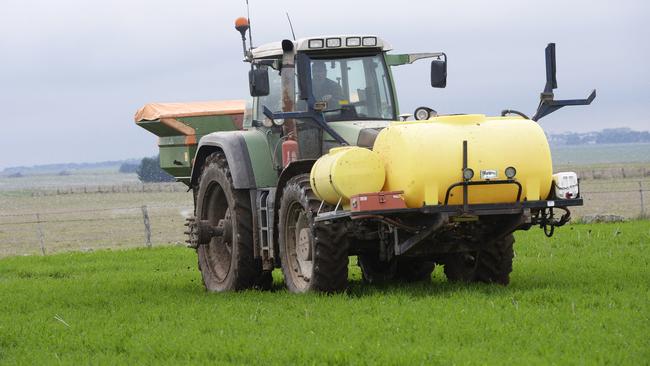Farmers move to secure fertiliser ahead of next year’s sowing season
Prices for some fertilisers have doubled in recent weeks, but international red flags point to ongoing cost increases for the key input.

Fertiliser costs have skyrocketed to their highest levels in a decade on the back of surging global demand and short supplies.
Victorian urea prices have gone from about $400/tonne in February to more than $800/t now, plus delivery costs.
While Phosphorus fertiliser has lifted from a base of about $600/t in November to $900/t.
This has led farmers to fear further price hikes, with some making the unusual move to lock in some supplies for next season in an attempt to buffer their farm’s profits from further rising production costs.
High grain prices and a good growing season have bolstered farmers’ hopes for a good harvest, inspiring them to give crops the best chance to maximise yields through high inputs.
But they are now concerned the high price of the input – often the single largest cost to a farmer – will chop into their margins, and put some farms at risk of costly losses if the season.
Grain Growers chairman and Quambatook grower Brett Hosking said the skyrocketing prices “put pressure on grower’s decisions”.

Farmers often applied two thirds to a half of their fertiliser requirements upfront, at sowing time, and the remainder during the season if conditions warranted it.
“We’re fortunate that global grain prices are strong which will help buffer the costs, but the high fertiliser prices do mean there is a bigger risk (of losses) if there is a crop failure,” he said.
“There are a lot of conversations now about supply for next year’s crop and some growers are even pre-purchasing for next year, thinking it may even get worse before it gets better.
“There are high grain prices around the globe, and the key to high yields is a matter of inputs so there is an incentive to put out more fertiliser.”
Major Western Victorian agricultural supplier Gorst Rural director Cam Conboy said he understood China had reduced the tonnages of fertiliser they exported and added an export tax to urea.
India was also buying more fertiliser, and high grain prices and good domestic season were pushing growers to maximise their yields with more fertiliser inputs.
He said some growers would have locked in fertiliser purchases earlier in the season, but others waited to get a gauge on the season before buying.
Mr Conboy said there were limited alternatives for growers sourcing nitrogen for their crops.
He said some growers may look at using more N-fixing legumes and pastures, or liquid fertilisers. However, he said urea had been viewed as the most cost-effective option.
WAFarmers president John Hassell said in his state urea had gone from $550/t earlier to $800/t.
“That will chop into our margins a bit,” he said. “It is not normal at all to see a big price increase like that during the season.”
Australian Fertiliser Services Association executive officer Owen McCarron said “anecdotally there has been a lot of fertiliser applied in the last 18 months due to the relatively good season and confidence”.
His organisation was encouraging members to be in regular contact with suppliers regarding market dynamics and that there were “some reservations that farmers may react to the high prices of fertilisers”.
Market commentary from the US also suggested suppliers were securing fertiliser supplies for the next 12 months, he said, with indications that there would be “significant demand and prices would be strong” globally.
MORE


